Meet The Hero of Canton Hero of Bladehold and his friends tokens.
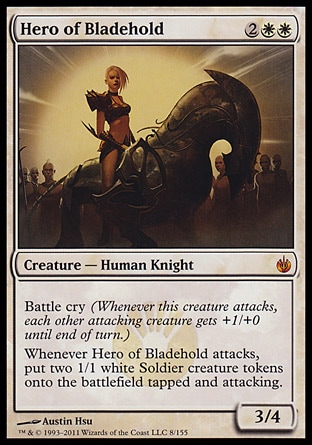
Oracle Text:
Creature — Human Knight
Battle cry (Whenever this creature attacks, each other attacking creature gets +1/+0 until end of turn.)
Whenever Hero of Bladehold attacks, create two 1/1 white Soldier creature tokens that are tapped and attacking.
Hero of Bladehold has two triggered abilities. They both trigger at the same time. The trigger event occurs when Hero of Bladehold is declared as an attacker as a turn-based action during the declare attackers step.
Phew! This was hard to formulate. I hope you’ve managed to read it. Why is it so complex? It’s because “being declared as an attacker” and “attacking” aren’t the same from the rules’ perspective. Abilities that have “When the creature attacks” trigger only if the creature was declared as an attacker.
Imagine you choose Yore-Tiller Nephilim on the declare attackers step. This means that after Nephilim’s trigger is put on the stack, you must choose a target for the ability. Assume it is Hero of Bladehold, which is currently on your graveyard. This creature will be put on the battlefield tapped and attacking. And all of sudden you get neither Battle cry nor tokens, nothing. Hero of Bladehold’s abilities just don’t trigger.
However, if you declare Hero of Bladehold as an attacker, both triggers go to stack (like Nephilim’s one in the previous example). As there are two abilities, both are controlled by one player (by you), and you are the active player (otherwise you couldn’t have attacked), you put the triggers on the stack first in the order you want.
It’s usually beneficial for the created tokens to have the Battle cry bonus, so they should be on the battlefield when it resolves. That’s why you should put Battle cry trigger on the stack first and the tokens trigger second.
We’ll talk about token creation later. By now you should remember Hero of Bladehold’s tokens enter the battlefield tapped and attacking. When each one comes into play you choose if it is attacking your opponent or a Planeswalker he/she controls (different tokens can attack different opponents or Planeswalkers). This choice doesn’t depend on who is attacked by Hero of Bladehold. These special tokens also aren’t affected by restrictions placed on attackers.
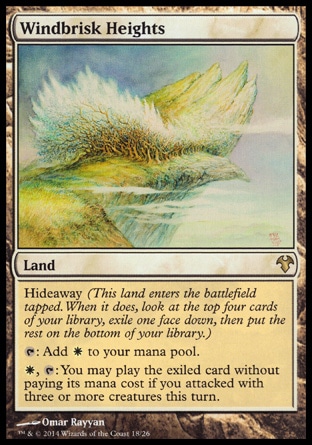
If your Hero of Bladehold attacks alone, you can’t activate Windbrisk Heights’ ability. There are three creatures attacking, but only the first one was declared as an attacker, while the rest of them have appeared after this turn-based action — and thus haven’t “attacked”.
If your cunning opponent activates Gideon Jura’s first loyalty ability targeting you, then Hero of Bladehold must attack Gideon (if able). However, tokens created by Hero’s second ability aren’t affected by the loyalty ability and thus can attack either your opponent or Gideon.
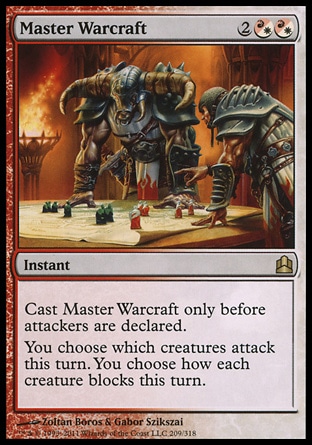
If your cunning opponent casts and resolves Master Warcraft, he/she can choose Hero of Bladehold; then the tokens will appear. Your opponent can’t influence them with Master Warcraft.

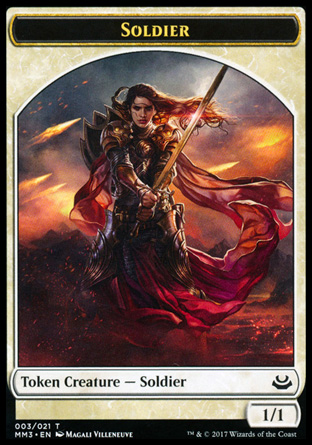

Token
Do you know what the duck test is? “If it looks like a duck, swims like a duck, and quacks like a duck, then it probably is a duck”. Surprisingly, a token doesn’t pass the duck test. Although it may look like a card and act like one, it still isn’t a card. Token is not a card. Even like this:
Token is not a card!
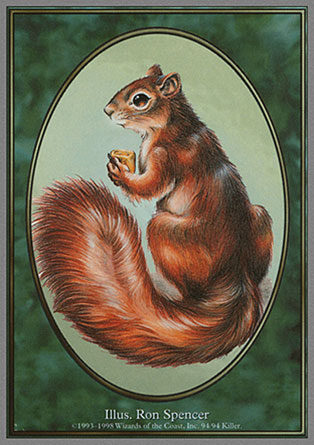
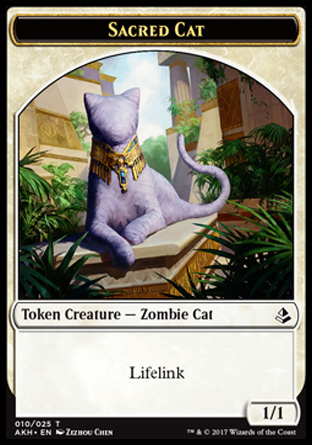
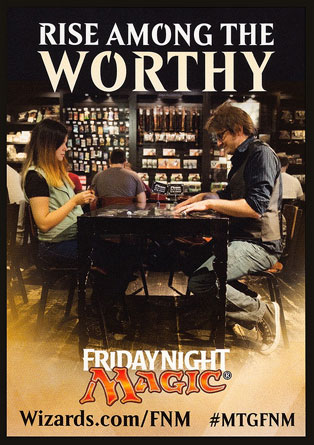
If a token is printed by Wizards and has a back of a Magic card, it’s still not a card. Contemporary tokens are printed with ads on its back assuming people will stop mistaking them for cards. Doesn’t help much though.
As a token represents a card it should be able to indicate its status. That’s why players use all kinds of random items as tokens: empty card sleeves, cell phones and even wallets. You aren’t allowed to mix tokens with sideboard cards. Using sideboard cards as tokens is obviously bad. Even worse is using cards from graveyard. But as human recklessness has literally no limits, you can easily come over people who are attempting such things. Don’t let your opponent do it.
If you are using a token-based deck, it’s good to have tokens prepared in advance. I’m assuring you, it’s a pleasure.

There are two types of effects that put tokens on the battlefield: first copy some card and second make tokens “from scratch”.
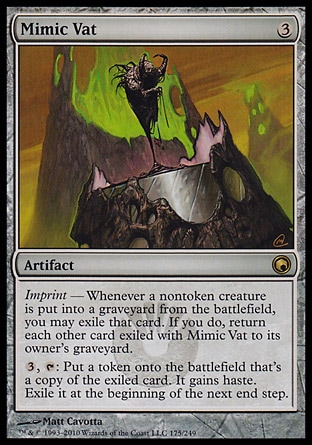
Mimic Vat’s second ability puts an exact copy of a card exiled by its first ability. Suppose we exiled our Hero of Bladehold with Mimic Vat. Then the token we get has the following characteristics:
Name: Hero of Bladehold
Type: creature
Subtype: Human and Knight
Supertype: none
Mana cost: {2WW}
mana value: 4 (indicated by mana cost)
Color: white (indicated by mana cost)
P/T: 3/4
Abilities:
Battle cry (Whenever this creature attacks, each other attacking creature gets +1/+0 until end of turn.)
Whenever Hero of Bladehold attacks, put two 1/1 white Soldier creature tokens onto the battlefield tapped and attacking.
There’s no difference between the token and the original Hero of Bladehold, except for the token is not a card.

Hero of Bladehold’s second ability puts two tokens on the battlefield and defines their characteristics:
Name: Soldier Token
Type: creature
Subtype: Soldier
Supertype: none
Mana cost: none
mana value: 0 (defined by rules)
Color: white
P/T: 1/1
Abilities: none
When a token is a copy of an object, it gets all copiable values of this object (they can be changed by the effect that’s copying the object). For more details see Attack of the Clones.
An effect creating a token “from scratch” can define any amount of token’s characteristics. These become the token’s copiable values. If an effect doesn’t define some of characteristics, the token doesn’t have them. For example, Hero of Bladehold’s ability doesn’t define mana cost, supertype, text and abilities.
Note that a token isn’t necessary a creature, although creature tokens are the most common ones. Any token, however, is good at what it does best — it represents a duck, I mean, a card.
If an effect creating a creature token doesn’t specify its name, its name matches its type(s) plus the word “Token.” That’s why our Soldier has name Soldier Token and type Soldier. Bitterblossom effect creates tokens named Faerie Rogue Token and two creature types: Faerie and Rogue.
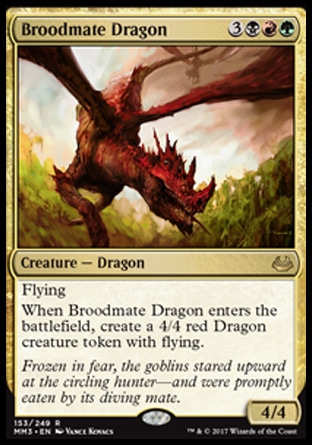
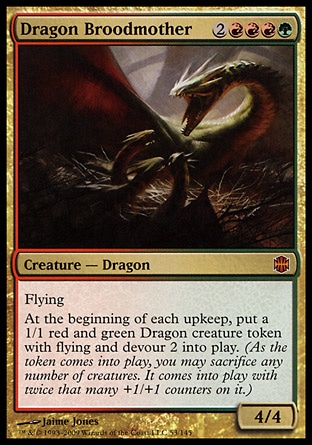
Tokens created with Broodmate Dragon and Dragon Broodmother have entirely different sets of characteristics but same names because they have one type — Dragon, and the name isn’t specified by the effect that created them. This means that if Leyline of Singularity appears on the battlefield, all these Dragon Tokens will be affected by the “legend rule”: there will be only one token left for each side.
While the token is on the battlefield, name-changing effects don’t affect its subtype and vice versa.
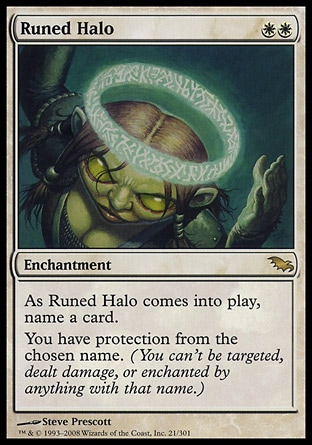
As we’re talking about card names we should not forget Runed Halo. When Runed Halo enters the battlefield you can’t name a token name. Let’s read the card carefully: Runed Halo asks to name a card, and a token is not a card. That’s why neither Faerie, nor Rogue, nor Token can be named. The tokens that are copies of a card are less lucky. You can name the original card and be protected from tokens.
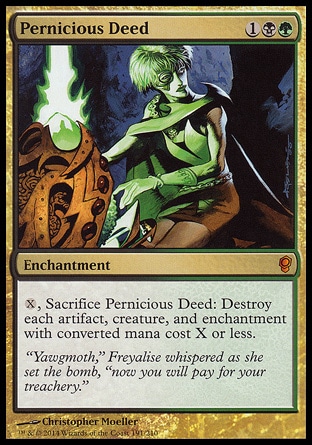
The important question is how to define a token’s mana value.
As we’ve mentioned earlier, tokens are different — some of them have mana cost, others don’t.
If a token has mana cost then its mana value is defined as usual: mana cost in numbers regardless of mana color and type.
If a token doesn’t have mana cost (like our Soldiers) then its mana value is defined by the following rule:
The mana value of an object with no mana cost is 0.
So if you want to get rid of a million Soldiers with no mana cost, you should activate Pernicious Deed’s ability with X=0.
According to the rules, both controller and owner of the token is the player under whose control the token has entered the battlefield.

Hero of Bladehold’s ability puts tokens on the battlefield under your control. You control and own the tokens.
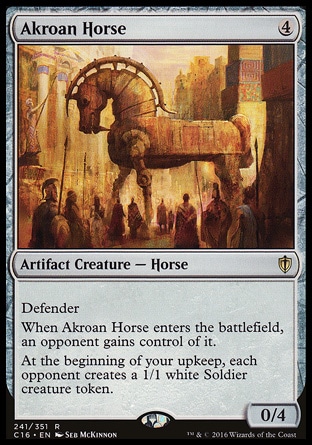
Akroan Horse’s ability puts tokens on the battlefield under your opponent’s control. Your opponent controls and owns the tokens. Brand won’t get them under your control.
A token on the battlefield is an independent permanent. If an effect creating the token doesn’t limit its lifetime, the token starts living on its own. If Hero of Bladehold leaves the battlefield it doesn’t affect tokens created by its ability.
Geist of Saint Traft not only creates a token, it also creates a delayed triggered ability which exiles the token at the end of combat phase. If this ability is countered, it will never trigger again. This ability isn’t a token’s ability.
If a token leaves the battlefield, it can’t come back even if there’s an effect telling it to do so. The token moves to another zone and it ceases to exist next time SBA are performed. All abilities that track objects moving between zones trigger.
When a token dies it is put into a graveyard!
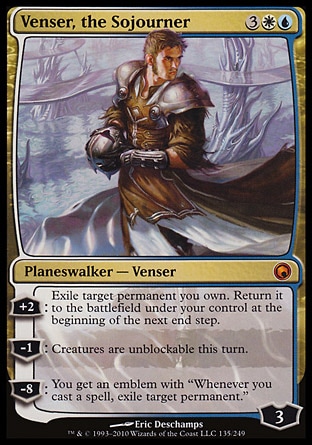
If you targeted a token with Venser, the Sojourner’s first ability, the token is exiled but it’s not returned. When SBA are performed it ceases to exist.
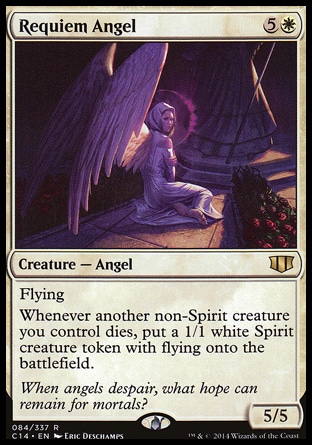
Requiem Angel’s ability creates a cycle of tokens. When our Soldier dies, it means that it is put into graveyard from play, and Angel’s ability triggers.
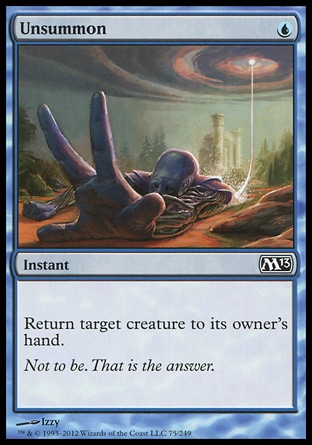
Unsummon is a pretty popular way to deal with tokens. When it resolves, the token is put in your hand and ceases to exist when SBA are performed.
- ⇑ A sideboard is a group of additional cards the player may use to modify his or her deck between games of a match. A player may use these cards in his or her main deck during all games after the first one in a match. Other items (token cards, double-faced card represented in the deck by a checklist card, etc) should be kept separate from the sideboard during game play. Restrictions on the composition and use of a sideboard differ between format types — for example, a sideboard in constructed tournaments can contain no more than 15 cards.
- ⇑ If you look carefully at this masterpiece of printing art, you may notice the word “token” in its type. Don’t believe what you are seeing! It can’t be there just because it can’t. “Token” is not a card type, and definitely not a supertype.
Translated by Bella Dasaeva

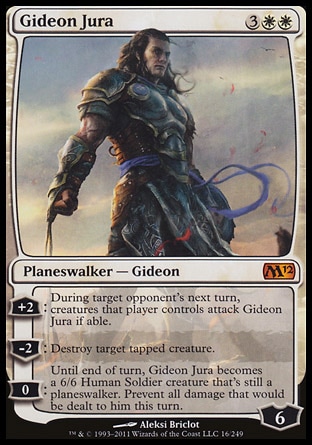
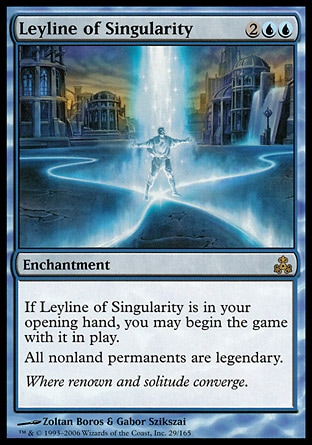

If you control Intangible Virtue and declare Hero of Bladehold as an attacker, Soldier tokens will have Vigilance but they will still come into play tapped. They are tapped because the effect that puts them on the battlefield says so, not because they are attacking.